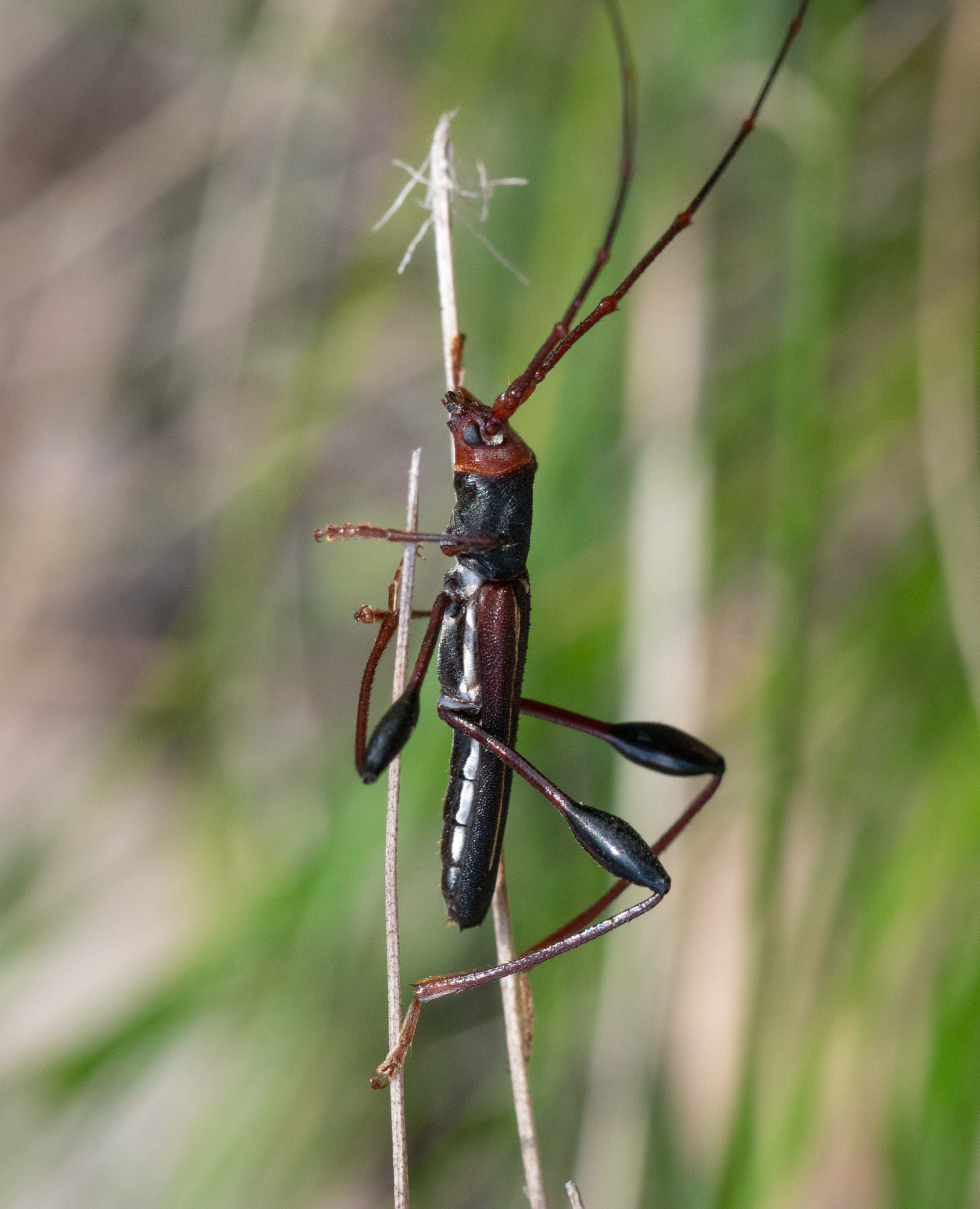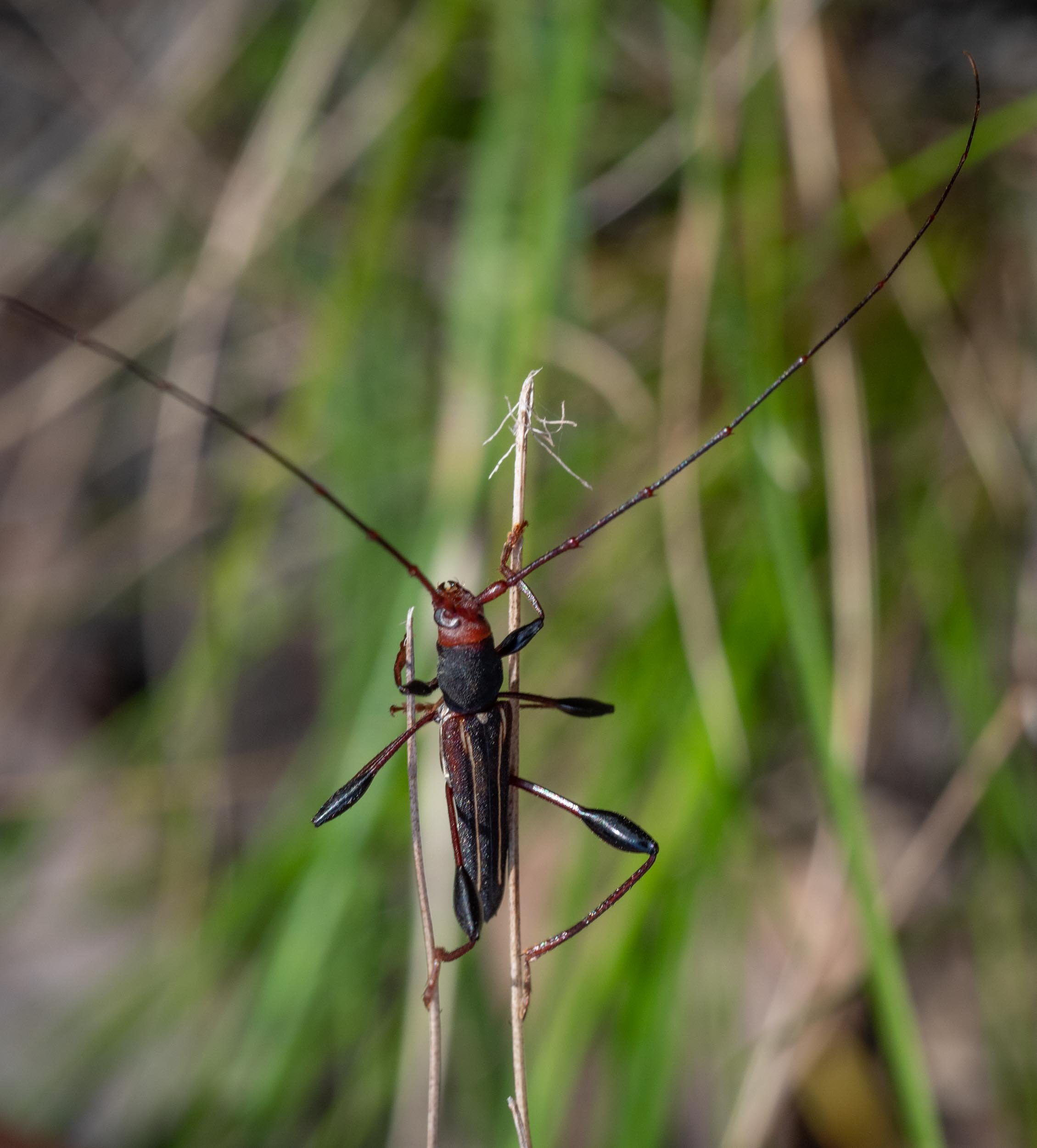
Long-nosed Lycid Beetle
Porrostoma rhipidium … at least, I think it is. Porrostoma rhipidium has excellent mimics including jewel beetles, weevils, longhorn beetles and even flies!

Long-nosed Lycid Beetle
Porrostoma rhipidium, resting after rain.

grass weevils
Aoplocnemis rufipes. We regularly find these small weevils - individually or in tandem – on the tussock grass Poa labillardierei.

checkered beetle
Eleale pucher. As an adult, this small beetle feeds on flowers. The larvae are reportedly found under loose bark.

chafer
Diphucephala, arguably more attractive than the typical brown or black beetles of this family.

leaf beetle
Mecynodera coxalgica. Despite the large back legs and the common name ‘Kangaroo Beetle’, this species doesn’t jump. They feed on pollen … and this one was found on flowering Gahnia, with pollen-laden anthers readily accessible.

ground beetle
Carenum bonelli. This burrowing, predatory, flightless, (and beautiful!) beetle is yet another first for our home list. It is a large, Australian genus, and we are only able to identify it to species level thanks to experienced coleopterist Mark Hura (via iNaturalist).

Hairy Spotted Beetle
Anoplognathus velutinus … a Christmas Beetle! Although not quite as iridescent as some other members of the genus, this large beetle is nonetheless eye-catching. Several were attracted to our moth light sheet this month. And it’s another first for our home list.

longhorn beetle
Amphirhoe sloanei. The larvae of this day-active beetle develop in the dead or dying branches of Acacia. Well, we have plenty of those!

longhorn beetle
Amphirhoe sloanei. This distinctive species is found from Rockhampton (QLD) all the way around the coast to South Australia. Yet we’d not seen it before.

Elephant Weevil
Orthorhinus cylindrirostris. This rather large weevil was apparently attracted to the house lights. Larvae feed inside eucalypt stems, while the adults eat buds and young shoots.











